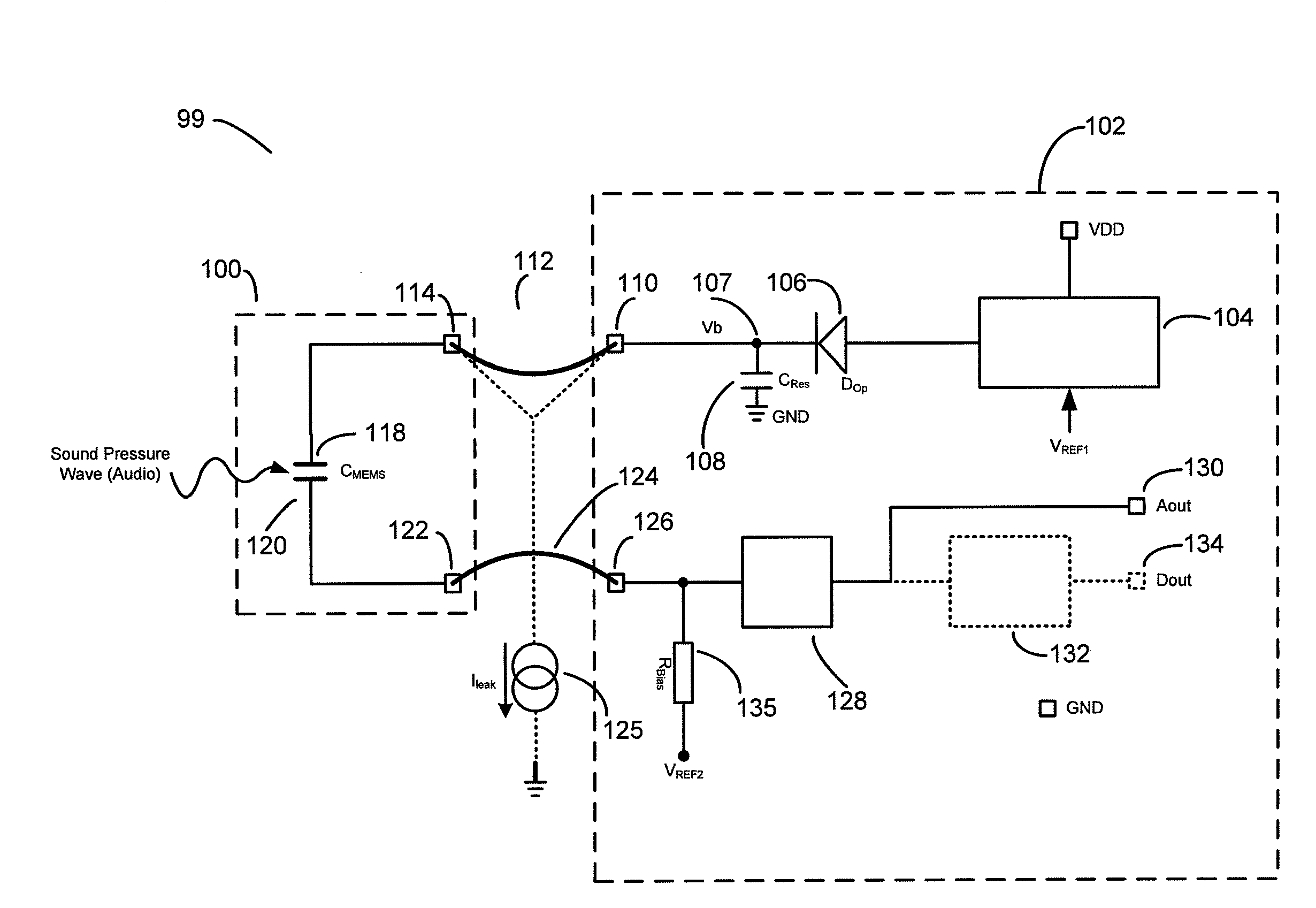Circuits for biasing/charging high impedance loads
a high impedance load and circuit technology, applied in the field of circuit arrangement, can solve the problems of inability to passively filter, undesirable rapid rise in noise with leakage above such a knee, inability to bias voltage generator inherently noisy, etc., and achieve the effect of more rapid charging, low voltage on the output terminal, and rapid charging of the devi
- Summary
- Abstract
- Description
- Claims
- Application Information
AI Technical Summary
Benefits of technology
Problems solved by technology
Method used
Image
Examples
Embodiment Construction
[0065]The embodiments below will be described in relation to charging a capacitive transducer such as a MEMS microphone. However it is noted that the invention is suitable not only for charging or biasing any type of capacitive load but also with other applications where charging or biasing is required with low noise. The skilled person will appreciate that a capacitive load can be regarded as a high impedance load and the invention is suitable for biasing other high impedance loads.
[0066]In an embodiment of the present invention, the forward biased diode 106 in FIG. 1 is replaced by a reverse biased diode DR 206 as shown in FIG. 4.
[0067]The reverse biased diode is preferably what may be referred to as a leaky diode i.e. it allows some current to flow from node X to node Y when reverse biased, i.e. it allows a small reverse current. Such leaky current flow is advantageous as it allows the voltage bias means to supply a current to compensate for any leakage current associated with th...
PUM
 Login to View More
Login to View More Abstract
Description
Claims
Application Information
 Login to View More
Login to View More - R&D
- Intellectual Property
- Life Sciences
- Materials
- Tech Scout
- Unparalleled Data Quality
- Higher Quality Content
- 60% Fewer Hallucinations
Browse by: Latest US Patents, China's latest patents, Technical Efficacy Thesaurus, Application Domain, Technology Topic, Popular Technical Reports.
© 2025 PatSnap. All rights reserved.Legal|Privacy policy|Modern Slavery Act Transparency Statement|Sitemap|About US| Contact US: help@patsnap.com



